9 Five-Star Project Scheduling Software to Try

Project scheduling is difficult to master without the right software. With countless workflow steps, tasks, and resource calendars, it may be close to impossible for one to keep track of it all. And yet building a project schedule is the task project managers must shoulder every time they take on a new project. A project like revamping a website, for example, will need its own customized plan that suits its intricacies best. And if you have a lot of things and dependencies going on at once, you don’t want to mix them all up and end up reporting inaccurate progress and timelines to the higher-ups.
An abundance of project management scheduling software on the market doesn’t make it any easier. It’s really difficult to find a platform for project planning and scheduling that is effective and easy to learn at the same time. Naturally, it takes time to filter through them all. Couple it with the fact that businesses are on the constant lookout for platforms that could save the bacon, prove value, and automate time-consuming processes. To this end, we’ve created this list of best project scheduling tools that really cut above the rest, so you won’t need to look for a needle in a haystack next time you decide to take your project scheduling to the next level.
What is project scheduling software?
In simple terms, it is a tool that will help you schedule all work, take control of your team’s availability, assign the right resources to the right tasks, and basically keep your projects running the way you planned. Good software for project scheduling is never some garden-variety tool you will use once and then forget about. Instead, it is an irreplaceable helper that will consolidate all relevant information in a single platform, visualize workflows, give you useful hints for better task prioritization, while pointing at dependencies and potential bottlenecks. If you are looking to add clarity and transparency to your projects, software-powered project scheduling might give you just that.
The benefits of project scheduling software
In general, project scheduling has a noble purpose — to keep the project on track cost-wise and plan-wise. The role of software in this is to automate the process and leave no room for human error. Truth is, project scheduling usually turns out to be a cumbersome process, and the more tangled the project is, the more clutter there will be stopping you from making the right project decisions. But this is where simple project scheduling software swoops in and starts doing its Cinderella-godmother magic. With a tool like that in the picture, you can expect to see improved collaboration, smarter planning, and scheduling, better task delegation, effective risk mitigation, fast access to file exchange, quick and effortless integration of new people, and easier budget management, to name a few.
Best project scheduling software tools
There are many project management tools on the market today and their features vary a great deal depending on the purpose of use. Here are the 2021 leaders based on project scheduling software reviews.
1. Forecast App — end-to-end project scheduling software
When picking up new software, it’s often difficult to start. However, this rule doesn’t apply to Forecast. This tool is a prime example of how technology can save the day: it has all the right features that will ensure your project is properly planned and visualised, and that your team has a smooth-sailing experience throughout its duration. The software is meant to make it easy to identify bottlenecks and tackle problems in project planning head-on. It provides a high-level, bird’s eye view of all project activities; adding more granular detail as needed.
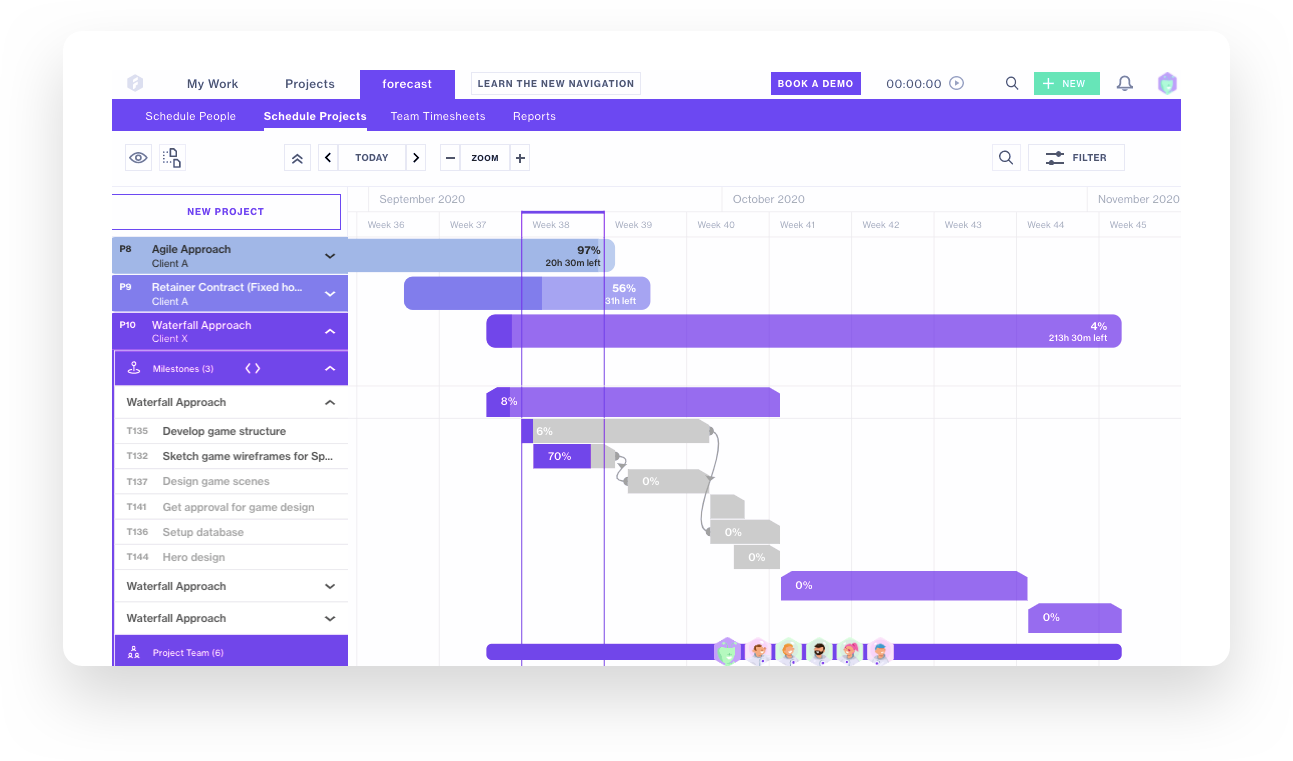
Not only it covers all the basics of project scheduling software — Forecast also provides a joined-up view of all your project operations, offering an end-to-end perspective for your projects and resources. And then goes its cherry-on-top feature, Auto Schedule, that reduces the amount of time you spend on scheduling the project and assigning relevant resources to your tasks to a bare minimum. This AI-driven feature will get your project planned out within a few clicks. Pricing starts from $29/user/month and there is a free 14-day trial available.
2. Runn — advanced solution with reporting and financial forecasting
Runn is a free project and resource scheduling software that will help you quickly schedule work for your team and instantly see how it affects your budget, revenue, and capacity. With its simple People Planner interface, you’ll be able to monitor all of your resources within the same space and know right away if some member on your team is overbooked or still has some capacity you can use up on your project.
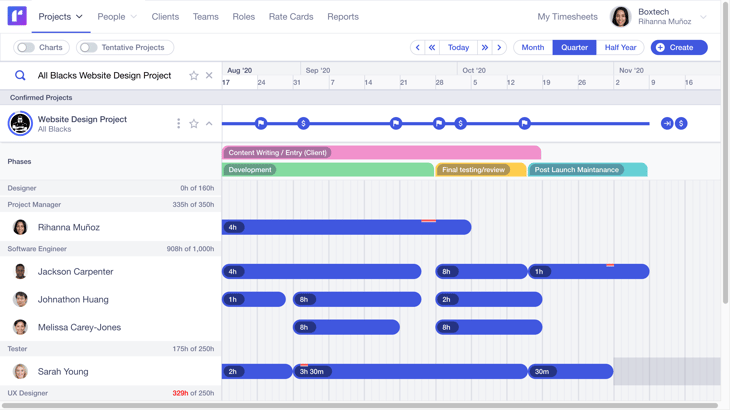
What’s more, you can track your project progress by looking at the budget and different time frames: see what the team has achieved in the last month, three months, and even half a year to evaluate the dynamics of project performance. Similar to Forecast, Runn equips you with financial forecasting data to make better business decisions.
This tool has a free limited version and if you want to get a subscription it’ll cost you from $10/user/month. There is also a free 14-day trial.
3. Mavenlink — a great tool for automated workflows
When it comes to project management, Mavenlink has it all. It offers a complete set of features that will help you with project scheduling, resource management, team collaboration, accounting, and even business intelligence.
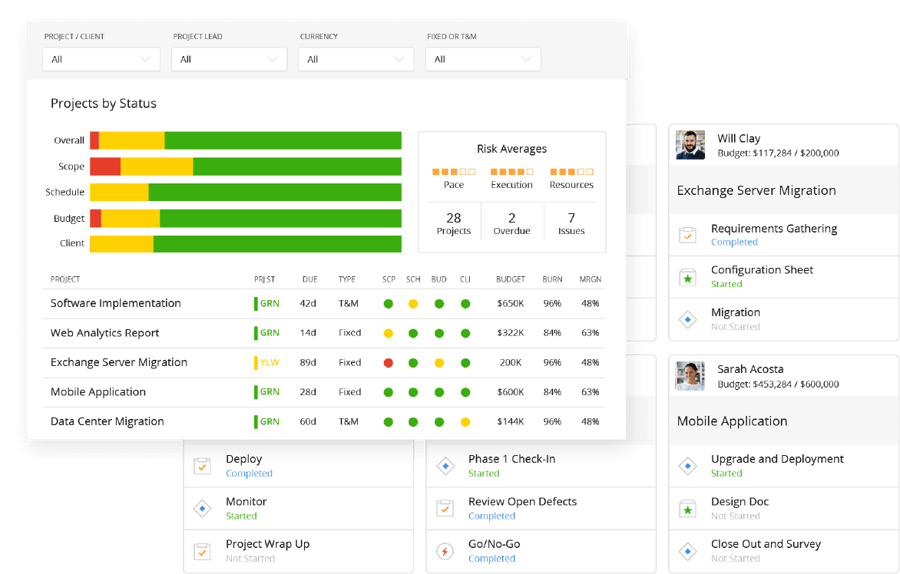
As for its approach to project scheduling, in particular, this Gantt chart project scheduling software will help you create an intricate and multi-level work breakdown structure with as many tasks and subtasks as you need. On top of that, you get to enjoy efficient task assignments, workflow planning, and even critical path analysis.
Using Mavenlink will cost you from $19/user/month but you can try it for 10 days free of charge first.
4. Adobe Workfront — all-in-one project management tool
Similar to Forecast, Workfront can boast an auto-scheduling feature that will considerably cut the time you invest into project scheduling. It is advanced project management and scheduling software that will simplify task creation, milestone setting, and resource allocation for you.
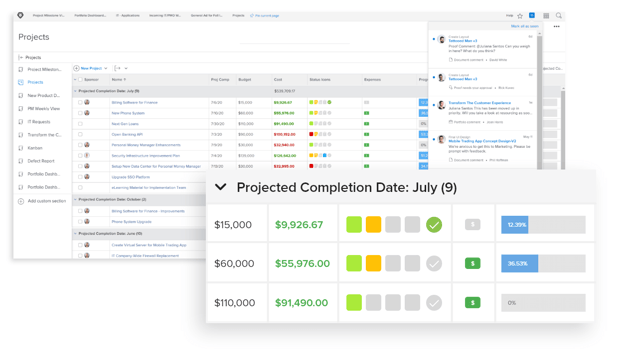
But that’s not all, Workfront goes far beyond just project scheduling only and can upgrade numerous processes from capacity planning and resource management to customizable reporting and easy project status monitoring. Interesting fact, with Workfront you will have 50 report templates to conveniently analyze and share the progress of your project.
The starting price is $30/user/month, but there is a free 30-day trial for you to test the tool in action first.
5. Paymo — free Gantt chart scheduling
If you are looking for a set of traditional scheduling features and do not have any budget to spend on project management software, Paymo could give you a good start with its free version and easy Gantt chart scheduling.
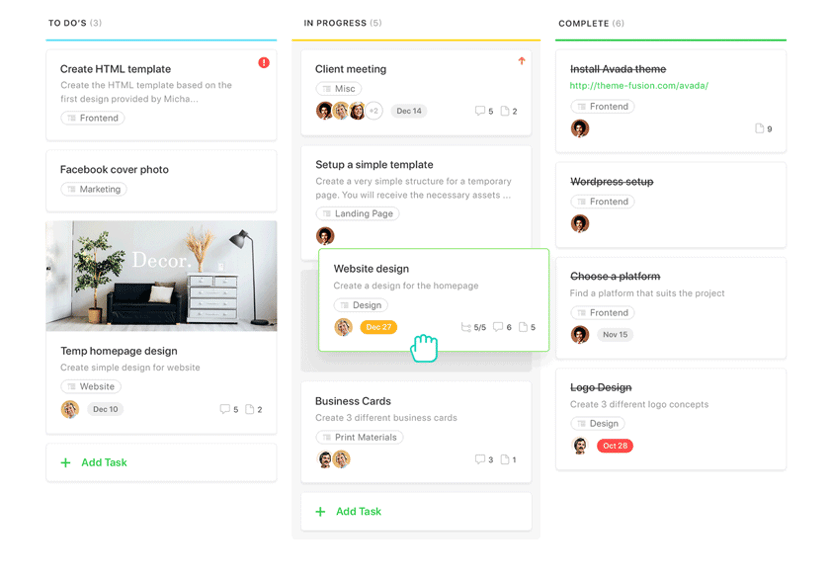
It is a niche tool primarily designed for creative and marketing teams in need of project scheduling automation. Here you can use various features like time tracking, task management, resource scheduling, and even easy invoicing to plan and manage your projects with ease.
Pricing at Paymo starts from $9.95/feature/month, but you can also use their free version or sign up for a free trial first.
6. Monday.com — highly customizable scheduling tool
Monday.com needs no introduction. When it comes to project scheduling, it’s full of customizable features that will make it easy for you to understand the status and progress of your project even if you don’t have much experience with project scheduling tools.
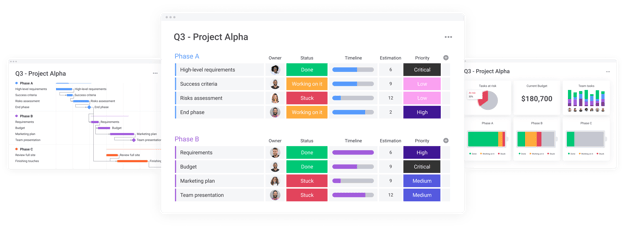
With its “timelines” feature, you can plan your projects to the tiniest detail, set achievable deadlines, assign relevant team members, and identify your dependencies. The tool is also very convenient because you can view your timelines in different formats: Kanban boards, lists, maps, spreadsheets, etc.
Monday.com will go easy on your project budget asking you to pay only $17/2 users/month after using a free 14-day trial first.
7. Wrike — great scheduling option for teams of different sizes
Wrike is easy to use and has a simple interface, which automatically puts it in the top lists of project scheduling software. Here you can plan and schedule your work using Gantt charts, Kanban boards, several other workload views, or even all of them at the same time.
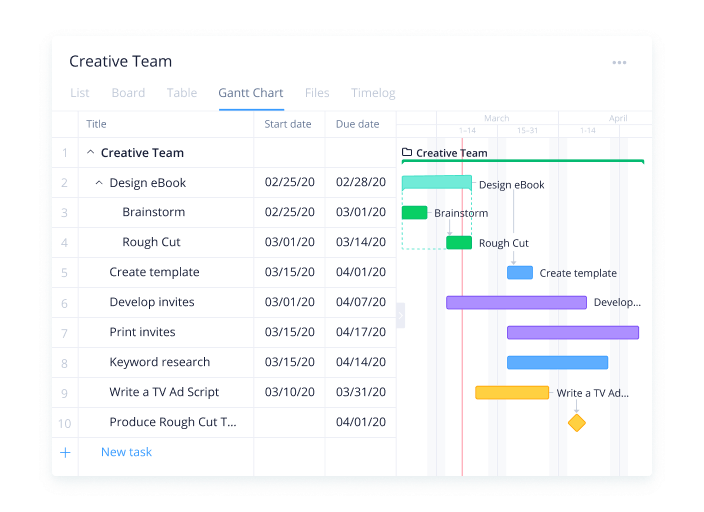
With this tool, you can make use of a calendar, task lists and subtasks, time tracking, and various reporting tools. One of its differentiators — Wrike is web-based project scheduling software, which means you do not need to be physically present in the office to efficiently manage your projects.
Using Wrike costs $9.80/user/month, but there is also a 14-day free trial and a free version available for your convenience.
8. Celoxis — best fit for complex project scheduling
Whatever test you throw at Celoxis — it will pass it with flying colors. This project scheduling software breathes advanced planning and dynamic thinking. Celoxis will offer you the option to plan your projects with an interactive Gantt chart, which is both simple and complex enough to take on different multi-level projects.
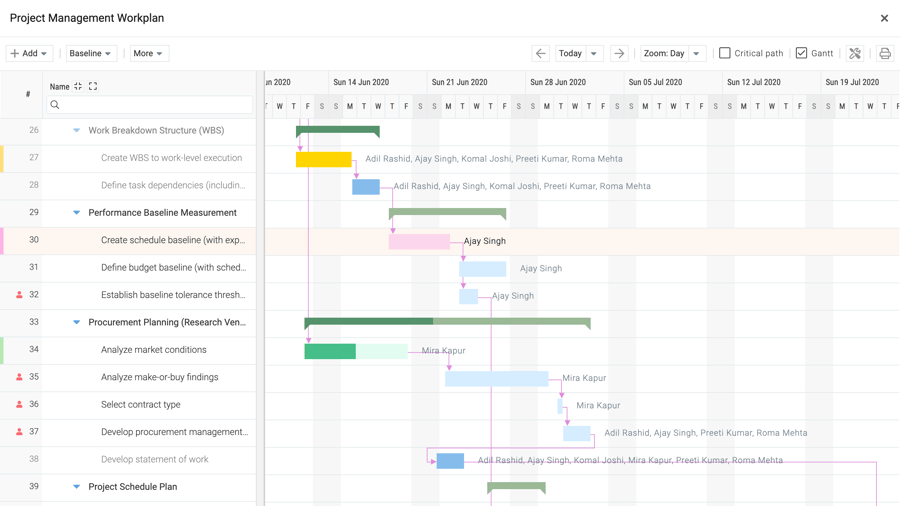
Most importantly, you can assign multiple resources to the same task, which is particularly relevant if you are dealing with a complex project where a single task can take days to complete.
You can do a free test run for 30 days here and if you see a match there, you can purchase a plan for $25/user/month.
9. Hive — web-based project scheduling tool for agencies
Hive is another online project management scheduling software you can use to take control of your projects with the help of the good old Gantt charts and Kanban boards. The tool will help you make clear descriptions for each task, identify relevant assignees, allocate responsibilities, outline project steps, and set important deadlines.
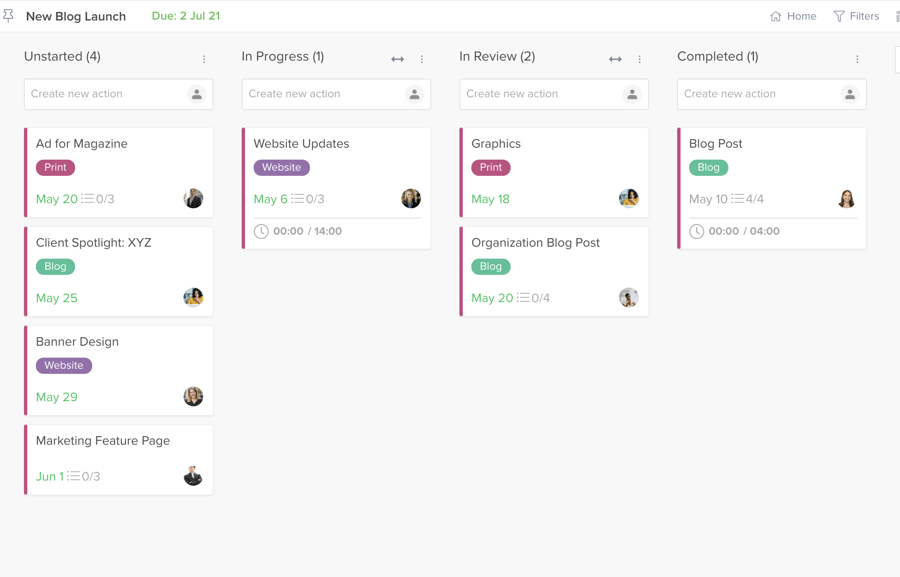
It is also easy to share and exchange documents within the system, which always makes team collaboration faster and easier.
The price tag for using Hive starts at $12/user/month with a free 14-day trial you can try first.
The fact is, project scheduling is hard. Whether you use a simple spreadsheet or you go with an enterprise solution, your team will inevitably have to make last-minute changes or swap new tasks into their calendars. Top-tier project scheduling tools will swoop in to the rescue of everyone who’d like to save time on re-planning, or simply get their projects off to a flying start. As spreadsheets get clunkier, the demand for effective project scheduling practices only grows. It explains why more and more vendors build on top of that need to make project scheduling less back-breaking and more feasible. To see what difference project scheduling software can make about your workflow, book a free demo with Forecast.
You might like to read these articles on our blog..
Subscribe to the Forecast Newsletter
Get a monthly roundup of productivity tips & hacks delivered straight to your inbox
